#strick and williams
Explore tagged Tumblr posts
Photo
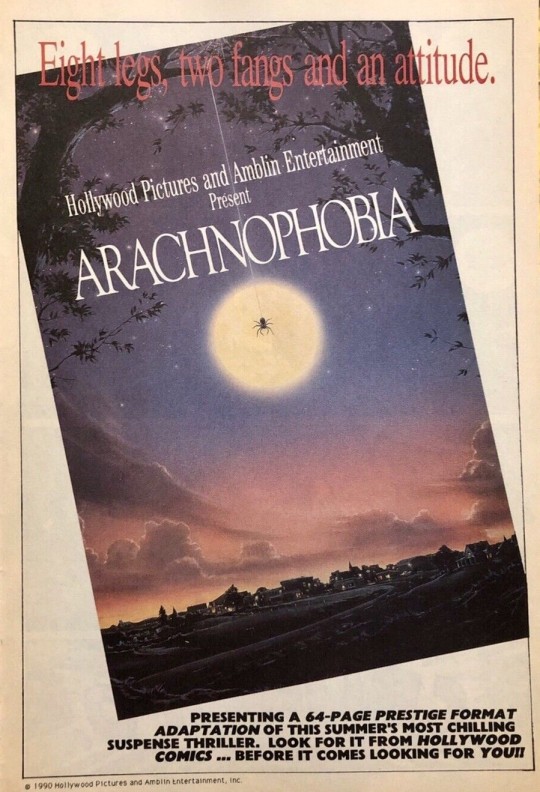
29 notes
·
View notes
Text

F1asco at Zolder
The 1981 Belgian Grand Prix (F1 Championship) held at Zolder was the fifth round of an intoxicating season where five drivers, eventual champion Nelson Piquet, Carlos Reutemann, Jacques Latiffe, Alain Prost and Alan Jones -- all fought for the title, ending up separated by just seven points by the end of the season. However, during the season there were some dark turns for the sport, most notably the '81 running of Zolder. The race was marred with two tragic and avoidable incidents with mechanics, one of them proving fatal. On Friday practice, a mechanic named Giovanni Amadeo from the Ossella team, a midfield team from the 1980s, stumbled off the pitwall into the patch of Williams driver Carlos Reutemann. Reutemann had no time to react, driving into the mechanic, who suffered a fractured skull and later on was declared dead.
This caused the mechanics of the grid to unanimously protest to the FIA, calling for better safety measures to protect them. Despite the mass protests, the FIA still waved on the warm- up lap at the pre-arranged time, causing chaos to ensue on the grid, numerous cars stalled with many drivers having left their cockpits to protest alongside the mechanics. Due to this, the cars began to overheat, with multiple cars including the Arrows being driven by a young Riccardo Patrese, expecting another formation lap due to the mistake by Piquet.
The organizers commenced the start process as Piquet amended his mistake, causing Patrese to wave his arms to signal to race control that he couldn' t restart his car. His mechanic, Dave Luckett, came onto the track to restart the car from behind. As he did so, the lighting sequence to start the race was given and the start went ahead despite his presence and Patrese's gesticulations and the clerk knowing a mechanic was on the grid.
What followed was sheer horror that still haunts F1 fans to this day. Patrese's team-mate, rookie Siegfried Stohr, ploughed into the back of his team-mate's car as the lights went green, stricking Luckett. Luckett suffered a broken leg and lacerations but miraculously survived the incident and somehow the race continued without a red flag, a safety car, let alone a yellow flag,and as the pack led by Reutemann were about the start the second lap!
Task at Hand:
As a consultant for the FIA:
Draft a Press Release Statement by the FIA detailing both cases and also explaining why the race did not have a Red Flag and Safety Car.
Compensation for the two mechanics
HR policies for the safety of stewards
Revision to SOPs for the stewards
Financial impacts of proposed changes
Prepare a report of not more than 12 pages and a PPT of not more than 9 slides Prepare a press release of not more than 2 pages
3 notes
·
View notes
Text
People of tik tok commenting that Bella doesn’t look like Ellie in the game until their fingers bleed as if the way Ellie looked in the game was not high drama
#firstly it doesn’t fucking matter#secondly game ellie having a stricking resemblance to Elliot page when a game with Elliot page came out the same year#get a fucking grip fellas#tlou#ellie williams#bella ramsey#she’s a brunette white girl what else do y’all need!
3 notes
·
View notes
Text
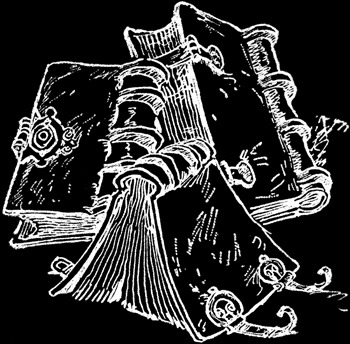

Endlich einmal wieder ein Vampir-Roman. Vampire sind aber ganz anders als man erwartet. Sie haben heimlich die Weltherrschaft an sich gerissen, benützen und unterhalten die Menschen mit Geld und wie Milch-bzw.-roter-Saft-Kühe bei Mozartklängen, pflegen Glamour und Diskurs und spiegeln damit auf sonderbarste die moderne russische Gesellschaft wieder.

Ein früher Criminal-Roman. Aufgrund widriger Umstände wird der Held des Mordes verdächtigt, kann den wahren Schuldigen aber nicht benennen. Ist vergnüglich, voller ergötzlichem Standesdünkel und Intrigen und zur Entstehungszeit war das ja auch möglicherweise noch ein neuartiges Handlungskonstrukt.

Der junge Lèmpriere hat möglicherweise Anspruch auf ein großes Vermögen, das ihm eine übelmeinende und vor bizarren Morden nicht zurückschreckende Geheimgesellschaft aber mit allen Mitteln und seine seiner enormen klassischen Bildung geschuldeten Naivität ausnutzend, vorzuenthalten versucht. Dafür schreibt er ein umfassendes Nachschlagewerk. Ist episch, vertrackt, groß und wundersam, und sogar mit Piraten! Sie sind aber schon sehr alt.

Während eines Dante-Kongresses in Rom werden im Rahmen eines Pfingstwunders sämtliche Teilnehmer bis auf den handfesten Erzähler entrückt, der das nicht verstehn noch recht einsehen mag. So albern das ist, erfährt man doch einiges über die Commedia, was mir bei der Verfilmung sehr zugute kam (vgl. hier).
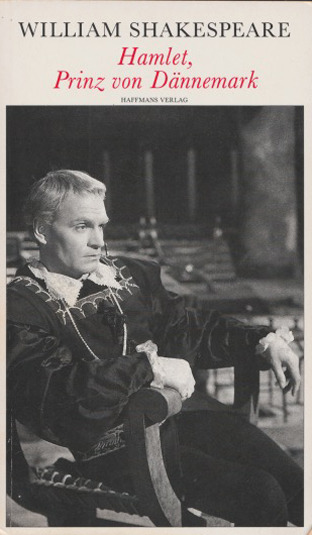
Der junge Dännenprinz Hamlet wirkt gelegentlich etwas unentschlossen (”Seyn oder nicht seyn”), eine Eigenschaft, die der schwäbsiche Besserwisser durch subtile Weglassungen und eine einmalige Bewertungsfußnote noch vertieft, der damit für die Einschätzung der deutschen Romantik verantwortlich gemacht werden muß (Eigentlich rate ich in diesem Falle zur Erich-Fried-Übersetzung). Dies diente der Vorbereitung für ein größer angelegtes Hamlet-Projekt.

In Iris Murdochs Meisterwerk The Black Prince, wird auch über Hamlet diskutiert, allerdings nicht so, wie ich erwartet hatte. Dafür über die Liebe, die Literatur, die Eifersucht, die Selbstüberschätzung, die Leidenschaft, den Neid und die Unfähigkeit, ein literarisches Meisterwerk zu schreiben. Zumindest über letzteres hätte sich Iris eigentlich keine Sorgen machen müssen.

Als weitere Huldigung zum Dostojewski-Jubiläum noch der erste Band von Eckhard Henscheids legendärer Trilogie des laufenden Schwachsinns, ein historischer Roman aus dem Jahr 1972 mit dem schlüssigen Titel Die Vollidioten, in dem eine Gruppe Frankfurter Tunichtgute eine Menge alkoholischer Getränke zu sich nimmt und sich Gedanken macht, welches Fräulein sie wohl als nächstes flachlegen können.
#Buch gelesen#Viktor Pelewin#Das fünfte Imperium#Vampire#Émile Gaboriau#Der Strick um den Hals#Lawrence Norfolk#Lèmpriere's Dictionary#Sibylle Lewitscharoff#Das Pfingstwunder#William Shakespeare#Hamlet#Christoph Martin Wieland#Iris Murdoch#The Black Prince#Eckhard Henscheid#Die Vollidioten
0 notes
Note
You think the harshness and stricked rules the royals showed the pair will continue and this is their position within the family for good? I'm so glad but I'm still passimistic because of the royals tendancy to be too naive and kind to their own. I'm aware that it's not logical to shut doors for them for 2 years only to open them again in the future so I think it was truly a power move by the family to show them once and for all that this is their new reality and it would never change, but some part of me can't help thinking if it would go back to how things were when Charles will be king. Will they give the kids titles, will they give her the half in half out she wants... All the family seem so mad at them and refused to be seen with them so that's a good sign but who knows maybe the pair would play nice for few years and manipulate the royals to bring them back for good behaviour and I don't want that. The Cambs seem to seriously want nothing to do with them forever and they are the future so I'm really happy about that. I can't image Kate or William ever agreeing to them being part of the team ever again but there's still Charles..What's your opinion?
There is no going for the BRF after this weekend, they have well and truly turned the page away from the Harkles. They have made it quite clear who the main characters are in this new chapter.
52 notes
·
View notes
Text
3 notes
·
View notes
Note
It’s his smile! Charlotte and William share the Diana closed mouth smirk but I think George has similar teeth to William and it’s obvious when they both do an open mouth smile. (Yes I have spent way too much time thinking about this, I’m judging myself too)
The smile YEEEEES! It was actually scary lol one day this little boy looks all Middleton and then BAM! William’s genes are stricking
2 notes
·
View notes
Text
Films
The Horn Blows at Midnight (1945)...Angel courier/extra (uncredited) The Valley of Decision (1945)…Paulie Anchors Aweigh (1945)…Donald Martin Bud Abbott & Lou Costello in Hollywood (1945)…(cameo) The Green Years (1946)…Robert Shannon as a child Home, Sweet Homicide (1946)…Archie Carstairs The Mighty McGurk (1947)…Nipper The Arnelo Affair (1947)…Ricky Parkson The Romance of Rosy Ridge (1947)…Andrew MacBean Song of the Thin Man (1947)…Nick Charles, Jr. Gentleman’s Agreement (1947)…Tommy Green Deep Waters (1948)…Donny Mitchell The Boy with Green Hair (1948)…Peter Fry Down to the Sea in Ships (1949)…Jed Joy The Secret Garden (1949)…Colin Craven Stars in My Crown (1950)…John Kenyon The Happy Years (1950)…John Humperdink “Dink” Stover Kim (1950)…Kimball “Kim” O’Hara, Jr. Cattle Drive (1951)…Chester Graham, Jr. Gun for a Coward (1957)…Harry “Hade” Keough The Careless Years (1957)…Jerry Vernon Compulsion (1959)…Judd Steiner Sons and Lovers (1960)…Paul Morel Long Day’s Journey Into Night (1962)…Edmund Tyrone Rapture (1965)…Joseph Psych-Out (1968)…Dave The Dunwich Horror (1970)…Wilbur Whateley The Last Movie (1971)…Billy the Kid/Dean The Loners (1972)…Stein The Werewolf of Washington (1973)…Jack Whittier The Pacific Connection (1974)…Miguel Win, Place or Steal (1974)…Billy Citizen Soldier (1975)…Dannes Won Ton Ton: The Dog Who Saved Hollywood (1976)…Paul Lavell Tracks (1976)…Mark One Away (1976)…Pete Bass She Came to the Valley (1979)…Pat Westall Wrong is Right (1982)…Hacker Human Highway (1982)…Otto Quartz/Old Otto Alsino and the Condor (1982)…Frank To Kill a Stranger (1983)…John Carver Paris, Texas (1984)…Walt Henderson Dune (1984)…Dr. Wellington Yueh The Legend of Billie Jean (1985)…Muldaur To Live and Die in L. A. (1985)…Bob Grimes Papa Was a Preacher (1986)…John White Blue Velvet (1986)…Ben Gardens of Stone (1987)…Captain Homer Thomas Beverly Hills Cop II (1987)…Chip Cain The Time Guardian (1987)…Boss Banzai Runner (1987)…Billy Baxter The Blue Iguana (1988)…Detective Carl Strick Married to the Mob (1988)…Tony “The Tiger” Russo Tucker: The Man and His Dream (1988)…Howard Hughes Smokescreen (1988)…Michael Dattalico Jorge um Brasiliero (1988)…Mario (also known as The Long Haul) Buying Time (1989)…Detective Novak Limit Up (1989)…Peter Oak Catchfire (1990)…John Luponi Sandino (1991)…Captain Hatfield The Player (1992)…Andy Civella Friends and Enemies (1992)…Freddie Chasers (1994)…Salesman Stig Mr. Wrong (1996)…Jack Tramonte Naked Souls (1996)…Duncan Last Resort (1996)…Gray Wolf Living in Peril (1997)…William McHale’s Navy (1997)…Captain Wallace B. Binghampton Midnight Blue (1997)…Katz-Feeney Air Force One (1997)…Defense Secretary Walter Dean The Shadow Men (1997)…Stan Mills The Rainmaker (1997)…Judge Harvey Hale Sinbad: The Battle of the Dark Knights (1998)…Bophisto Restraining Order (1999)…Charlie Mason Water Damage (1999)…Detective Frank Skoufaris The Venice Project (1999)…Senator Campbell Rites of Passage (1999)…Del Farraday In Pursuit (2000)…Charles Weitz The Flunky (2000)…Micky Italian Ties (2001)…Jimmy (also known as Face to Face) CQ (2001)…Dr. Ballard The Quickie (2001)…Michael Buffalo Soldiers (2001)…General Lancaster Inferno (2002)…Mayor Bill Klinger The Manchurian Candidate (2004)…Mark Whiting The Deal (2007)…Agent Tremayne C. O. G. (2013)…Hobbs Max Rose (2013)…Ben Tracey Deep in the Darkness (2014)…Phil Deighton Persecuted (2014)…Dave Wilson Rusty Steel (2014)…Hunts Entertainment (2015)…The Celebrity’s Henchman
9 notes
·
View notes
Text
Rip Torn: A Retrospective
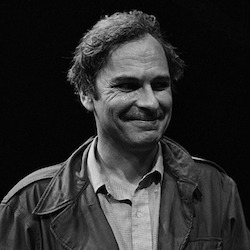
Rip Torn died on July 9th at age 88. That he lived that long is nothing short of miraculous.
In the summer of 1969, Rip Torn was drunkenly screaming through New York’s West Village on his motorcycle when he slammed it into a police cruiser. Torn broke his leg in the accident, but didn’t notice. The next morning he got up, got on a plane, and flew to Paris where he was set to star in Joseph Strick’s film version of Henry Miller’s Tropic of Cancer. He shot the entire film all hopped up on painkillers on an untreated busted leg,. And you know what? He still gives a remarkable performance. It wasn’t the only time he worked with broken bones, either.
For over 60 years, Torn carried on in the proud tradition of John Barrymore, Errol Flynn, Robert Mitchum, Frank Sinatra, and Lawrence Tierney as the last of the great Hollywood hellions. In between insane drunken escapades, he was nominated for Emmys and Tonys and Oscars, he established himself as one of America’s most respected character actors, a man with a knack for making even a small role a pivotal one, and he was in Every Movie and TV Show Ever Made. Next time you watch something take a close look at the credits and you’ll see.
Torn’s given name was Elmore Rual Torn, Jr., but was nicknamed Rip as a boy, as was tradition among all the Torn men. He was born and raised and educated in Texas, studying animal husbandry in college before turning to acting.

The motivation behind the decision was different than most. He hitchhiked to California to break into the movies not because he wanted to be a big star, but because he thought it would be an easy way to raise enough money to buy himself a ranch. Things didn’t work out quite so zip bang as he’d planned, though he did earn small roles on TV and made his feature debut in an uncredited role as a dentist in Elia Kazan’s great and scandalous 1956 film Baby Doll. Kazan hired him again the following year to play another uncredited but extremely important role in the equally great Face in the Crowd.
Although he wasn’t making the kind of money he needed to buy that ranch, he was getting enough acting jobs along the way to start taking the whole enterprise a bit more seriously. He moved to New York to study at the Actor’s studio, worked in theater both on and off Broadway, and from the mid-’50s to the mid-60s established himself on TV in everything from Playhouse 90 to Thriller to Route 66 to The Untouchables. After that things took off. There was just something sinister about Torn, those wicked eyes of his, that crooked-toothed leer, the whole rat-like demeanor, that suited him for villainous roles of all kinds. Plus he was a chameleon who could shift his whole look and stature with the simplest change of accent. He would go on to play Judas in King of Kings, countless presidents, doctors, senators, military officers and judges. He played rednecks and gangsters, cowboys and spies and executives. He played Walt Whitman twice, was in a whole bunch of Tennessee William’s plays (on Broadway, TV and film). Yeah, like I said, between the mid-’50s and the present, he was in every damn thing ever made. Trying to summarize his career is pretty much impossible, but there was a stretch there from the mid-60s to the late 70s when he was top billed when he was turning small supporting roles into leads, when he was moving easily between TV, experimental films, and big budget Hollywood jobs, and when he was starting to earn himself a reputation as a wild man.
Looking back on it now, it’s hard to imagine the kind of talent, both in front of and behind the camera, that came together on the 1965 period gambling picture The Cincinnati Kid. It was originally a Sam Peckinpah film with a script by Ring Lardner. Then Peckinpah was fired (surprise!) and Norman Jewison was brought in to direct. He thought the script was too self important and talky, so he brought in Terry Southern. He also gave Hal Ashby his first big break, bringing him in as editor and assistant director. Steve McQueen stars as a hotshot young poker player in ‘30s-era New Orleans. Karl Malden is a former hotshot on the skids. Jack weston is the loud whiny guy. Ann-Margaret is the bad girl, Tuesday Weld is the good girl, and Edward G. Robinson is the old man, the undisputed champ, the stud poker king feared by everyone.
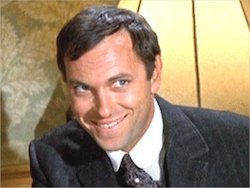
Ah, then there’s Rip Torn. His name’s deep in the credits but the whole film turns around him. He plays the slick and sleazy Southern Gentleman who will stop at nothing to see the Robinson character toppled. See, Robinson beat him at poker once, and for a Southern Gentleman of his stature there’s nothing in the world worse than losing. There’s one scene in particular, Torn’s showpiece here, in which he tries to blackmail the dealer (Malden) into cheating, and though it doesn’t sound like much nobody can muster up the cool menace like Torn. Oooohhh, he’s such a rotten son of a bitch.
Four years later he starred in Moses Ginsberg’s first film, Coming Apart, an experimental number that’s been called “More a Happening than an actual movie,.” Filmed with a single static camera to recreate the feel of a documentary, Torn stars as an unbalanced psychiatrist who torments and confuses his female patients, eventually going completely batty himself. It all takes place in one small room shot by that one unmoving camera. It’s at turns compelling and unbelievably tedious, and if it weren’t for Torn (thank god for that Actor’s Studio improv training) it would be unwatchable.
Around this same time Dennis Hopper cast Torn to be in Easy Rider. Then at what was either a production meeting or a cocktail party in New York (depending on who’s telling the story), Hopper and Torn got into a bit of a ruckus over whether or not all Texans were rednecks out to kill hippies. A knife was pulled (though Peter Fonda would later claim it was a butter knife, or maybe a fork, or maybe both). Next thing you know, Torn was thrown off the picture, and Hopper cast Jack Nicholson in his place.
About a year later Torn joined the cast of Norman Mailer’s improvisational experiment, Maidstone. Essentially it was a raucous, drunken three-day party out at Grove Press founder Barney Rossett’s Long Island estate around which Mailer tried to film himself as a director trying to shoot a movie. As the story goes, before shooting started each actor was given a card briefly describing his or her character, and that was as close as anyone got to a script. One character, however, was given a card at random informing the holder that his character was in fact a CIA assassin whose job it was to kill Mailer. The card’s recipient was supposed to be kept a secret from everyone in the cast, including Mailer.
Well, according to Rossett there was a little confusion there. Maybe it was the booze, or maybe the card simply wasn’t worded clearly. In any case Torn (naturally) got the card, but instead of thinking his character was supposed to kill Mailer, he somehow got the idea that HE was supposed to kill Mailer. Lucky for Mailer, too, as the confusion resulted in the only scene in the film anyone remembers.
After the shoot was over and most everyone had gone home, Mailer and his family are walking back toward the house when they’re stopped by a grinning and quite mad Torn, who is also clutching a small hatchet. The cameras are rolling and you can tell this was something Mailer was not prepared for. Nor was he prepared when Torn goes after his skull with the hatchet. The two wrestle each other to the ground, Mailer bites Torn’s ear, Torn leaves a deep gash in Mailer’s scalp, and Mailer’s wife and children scream in horror until a couple crew members pull Torn off him.
And that, my friends, is entertainment!
(The next morning Rossett found a drunken midget floating in his swimming pool, but that’s another story.)
Then came the motorcycle accident and shooting Tropic of Cancer on a broken leg. As it happens there were two films based on Henry Miller novels filming simultaneously two blocks apart in Paris. Jens Jorgen Thorsen’s Quiet Days in Clichy starred Paul Valjean, an American dancer who looked an awful lot like Miller, but neither sounded nor acted like him. Torn, meanwhile, looked absolutely nothing like Miller, but somehow by adopting just the slightest hint of a Brooklyn accent (and on all those painkillers) was somehow able to embody him completely. It’s a gritty, funny, poetic film and Torn is great, though to be fair it should be noted that Clichy was dirtier.
Also in 1970, Torn spoke out against the war in Vietnam on a TV show, and a few nights later someone fired a bullet through his window. It was a hell of a year for him.
In ‘73s Darryl Duke film, Payday, Torn gives what he himself would later refer to as his best performance. Or maybe his favorite. In any case he’s really something as Maury Dann, a womanizing, hard-drinking, bastard son of a bitch of a second-rate country singer. Dann and his band are on tour through the South as Dann screws and screws over everyone around him, from band members to family, to pretty much every woman he meets. He never quite hit the top, but insists on acting and being treated like he has. Toward the end he even talks his chauffer into taking a murder rap for him, since he has to get to a show. It’s an extremely dark, cynical, and painfully accurate portrait of the country music business of the early ‘70s, and Torn does all his own singing. It makes for a nice counterpoint to Robert Duvall’s quiet, soft-spoken, and sensitive country singer in Tender Mercies from a decade later.
Although again his name is buried deep in the credits of Larry Cohen’s 1977 biopic The Secret Files of J. Edgar Hoover the entire film revolves around him. He narrates, after all, and gives another memorable performance as a young man who decides to join the Bureau after his father (another agent) is gunned down by a two-bit hood on the street. After seeing what’s going on in the FBI, though, and after being punished himself for a minor indiscretion, he tries to bring Hoover down a notch or two. In what could have been a hamfisted cartoon, both Cohen and Torn (and star Broderick Crawford near the end of his career) manage a shockingly human portrait.
As a flipside to Torn’s tendency to turn minor supporting roles into leads, there was 1978’s Coma, the medical conspiracy thriller directed by Michael Chrichton based on the Robin Cook novel. Torn was fourth-billed behind Genevieve Bujold, MIchael Douglas, and Richard Widmark. And sure, Torn’s character, Dr. George, is the film’s central villain, the man behind a Boston hospital’s fiendish conspiracy to harvest human organs and sell them on the black market, but he only appears in one scene, and speaks roughly four lines. It’s unclear whether this was the plan from the start, an attempt to turn his character into another Harry Lime or Mabuse, or if maybe all his other scenes were cut after Torn went after Crichton with a hatchet (we can only hope). In any case he was missed. He might have livened up what was otherwise a pretty godawful picture.
As Torn grew older and a little larger and his hair started getting thinner, two things happened. He began playing more authority figures, which only makes sense I guess. He had that look and sound about him. He also started doing more comedies and genre films. Sometimes he even combined the two, playing Ronald Reagan in ‘82s Airplane II: The Sequel.
In ‘91 he was Bob Diamond, the charming, sleazy, and utterly ineffective lawyer trying to give Albert Brooks a boost out of Purgatory in Defending Your Life. He was the sinister CEO in the otherwise dreadful Robocop 3. He even began lending his voice to animated features and video games (usually playing a god of some kind).
Then in 1999 Dennis Hopper was a guest on Leno and told a few old Easy Rider stories, including the one about how Torn had pulled a knife on him at a party. Well, Torn, remembering things a bit differently, sued him for defamation.
It’s pretty hilarious if you think about it; these two guys who were both completely out of their heads in the late ‘60s going to court to determine which one of them was behaving badly. I mean, they both had reputations to maintain.
Well, most of the witnesses agreed with Torn that it was Hopper who pulled the knife (except for Peter Fonda, who remembered all kinds of different utensils), and the court ordered Hopper to pay Torn nearly half a million in damages. It was all kind of silly. I mean, it’s not like the story cost him any work. Hell, trying to literally kill Norman Mailer on camera didn’t even cost him any work. But I guess pride’s a funny thing.

After that he continued to work regularly, as Agent Zed in the Men in Black films, in sit-coms, in made-for-TV films, christ, anything that came along. Every director I’ve ever heard talk about Torn can’t praise him highly enough for his talent and professionalism (except maybe Mailer), though given his admitted temper, it’s also possible they’re just scared of him. He was nominated for six Emmys for his role on the Larry Sanders Show, and came to be recognized by a whole new generation as the executive Alec Baldwin worships but wants to replace on 30 Rock.
Along the way he set himself the task of repairing any damage his reputation as a hellraiser might have suffered as a result of that Hopper lawsuit. The DUIs started adding up. Or at least getting noticed, in part thanks to the actor’s tendency to swing on the arresting officers. Along with being the president of the Extreme Dodgeball League (who knew it even existed?) it seems he was also an extreme regular at a bar near his Connecticut home. Every once in awhile the bartender himself would tip off the cops after Torn headed for his car. I’m not sure if that bartender’s still there, but even after being fingered like that Torn remained a regular, though he didn’t always drive. And that in itself might have caused some problems.
After returning home from the bar one night in 2010, Torn found his keys didn’t work in the lock. Seeing no alternative, the 79-year-old was forced to break into his own house. He was probably surprised a few minutes later, just as he got his shoes off and was making himself comfortable, when the cops arrived and informed him that he wasn’t in his house at all, but had broken into a nearby bank. And the cops were probably surprised to find Torn was carrying a loaded handgun. Yeah, he’s not the only one who’s been there, as I think many of us can attest.
Once it was clarified that it was not Torn’s intention to rob the bank, he was given a two and a half year suspended sentence and three years probation.
The arrest prompted the tightassed, no fun creators of Thirty Rock to kill off his character, but he remained as busy as ever, including an uncredited role as an alien in Men in Black Three.
He once proudly noted that he’s never missed a performance. He’s worked with broken legs, broken arms and ankles, and once while doing a play he passed a kidney stone on opening night. He was a rare, tough old bird, a vanishing breed, and one of my heroes. We won’t see his like again.
by Jim Knipfel
86 notes
·
View notes
Photo


11 notes
·
View notes
Photo

https://www.mixcloud.com/newtownradiobk/total-absorption-w-trust-image-061820/
1. Hype Williams doulikeworldmusic.bandcamp.com 2. Steve Spacek stevespacek.bandcamp.com/album/if-u-wan-2-find-me 3. Moodymann moodymann.bandcamp.com 4. Dean Blunt doulikeworldmusic.bandcamp.com 5. Shabazz Palaces shabazzpalaces.bandcamp.com/album/black-up 6. Knxwledge knxwledge.bandcamp.com/album/gladwemet 7. Wavelength glydezonerecordings.bandcamp.com 8. Larry Heard larryheard.bandcamp.com 9. Theo Parrish soundsignature.net/product/aa-theo-parrish-sound-sculptures-vol-1 10. Steven Julien stevenjulien.bandcamp.com/album/bloodline 11. Les Sins lessins.bandcamp.com 12. Fred P. privatesociety.bandcamp.com/music 13. Africa HiTech warp.net/releases/115687-africa-hitech-93-million-miles 14. Oasis omarsdetroit.us 15. Big Strick omarsdetroit.us 16. Delroy Edwards apronrecords.bandcamp.com/album/dubonnet 17. The Abstract Eye theabstracteye.bandcamp.com/album/cool-warm-divine-ep 18. Hieroglyphic Being hieroglyphicbeingofficial.bandcamp.com 19. Dam-Funk dam-funk.bandcamp.com 20. Omar-S omarsdetroit.us 21. Andres andres.bandcamp.com 22. DJ Stingray lowerparts.bandcamp.com/album/gognition 23. Kaotic Spacial Rhythms 430west.com 24. Kyle Hall kylehall.bandcamp.com 25. Benga & Coki tempa.co.uk 26. Silkie & Mizz Beats deepmedimusik.bandcamp.com/album/purple-love-test 27. Digital Mystikz deepmedimusik.bandcamp.com 28. Actress actress.bandcamp.com/music 29. Shabazz Palaces shabazzpalaces.bandcamp.com/album/quazarz-born-on-a-gangster-star 30. Shafiq Husayn shafiqhusayn.bandcamp.com/album/shafiq-en-a-free-ka 31. Yves Tumor p-a-n.bandcamp.com/album/v-a-mono-no-aware
1 note
·
View note
Photo

My revamped top 10 assist men I left Rod Strick out and was bugging he’s 12th all time so from my previous list Rondo has to go, even tho he’s higher then Jason Williams statistically no one can argue why J.Will is on and Rondo off... https://www.instagram.com/p/B1P0sTEAZAKm-YfN8gB9vMIEsaO6uiC_7JU2aI0/?igshid=rz1mhpgf3zzp
4 notes
·
View notes
Text
So what plans do i have for future not to make my situation worse.
Not sure why Patricia stopped talking all her mental problems i guess but Pennsylvania foster messed up she threw me out didn't look back my niece didn't care what happens to me. My mother got hardship against her for her mess up. She said i could stay funny thing by her rules of abuse. Funny thing is William "nic name willy or bill wasn't as mean to me as much as too stricked. Well he's dead so rest in peace.
My sister doesn't talk to me, as i still exist but with my mom her problems kinda grew on her so small problems show thru. So next step see how far mission can get me other then that i'm truely homeless. Not what i planned on.
0 notes
Text

Richter senkt Summe stark ab Tesla soll wegen Rassismus 15 Millionen Dollar zahlen 14.04.2022, 16:00 Uhr In einem kalifornischen Tesla-Werk kommt es immer wieder zu Rassismus gegen dort beschäftigte Afroamerikaner. 2017 klagt Owen Diaz deshalb gegen den Konzern, 2021 wird ihm eine Entschädigung in dreistelliger Millionenhöhe zugesprochen. Nun wird die Summe jedoch auf 15 Millionen Dollar herabgesenkt. Der US-Elektroautobauer Tesla muss wegen Rassismus am Arbeitsplatz eine Entschädigung von 15 Millionen Dollar (fast 14 Millionen Euro) an einen früheren Beschäftigten zahlen. Das entschied ein US-Richter am Bezirksgericht San Francisco. Die von einem Geschworenen-Gericht im Oktober festgesetzte Summe von 137 Millionen Dollar Entschädigung nannte der Richter "übertrieben" und kürzte sie daher stark zusammen. Geklagt hatte Owen Diaz bereits 2017; er war von Juni 2015 bis Juni 2016 im Tesla-Werk im kalifornischen Fremont als Leiharbeiter beschäftigt. Afroamerikaner seien dort regelmäßig "rassistischen Bezeichnungen und herabwürdigender Sprache" ausgesetzt gewesen. Tesla habe auf Beschwerden nicht reagiert. Richter William Orrick erklärte nun, die vorgelegten Beweise seien "verstörend". Das Tesla-Werk sei "durchtränkt" von Rassismus gewesen. Diaz sei fortgesetzt rassistisch misshandelt worden. Der Richter nannte "das N-Wort und andere Schimpfwörter". Die Vorgesetzten und die Geschäftsführung hätten wenig oder gar nicht auf Beschwerden reagiert - Vorgesetzte hätten vielmehr mitgemacht: Sie hätten Diaz gedroht und eine rassistische Karikatur in der Nähe seines Arbeitsplatzes gezeichnet. Behörde erhielt "hunderte Beschwerden" Das Geschworenen-Gericht hatte Tesla im Oktober dazu verdonnert, 130 Millionen Dollar Strafschadenersatz und weitere 6,9 Millionen Dollar Schadenersatz wegen "emotionalen Leidens" zu zahlen. Richter Orrick senkte den Strafschadenersatz auf 13,5 Millionen Dollar und die Summe für das erlittene Leid auf 1,5 Millionen Dollar. Tesla hatte nach dem Urteil vom Oktober einen Post von Vize-Personalchefin Valerie Capers Workman veröffentlicht. Sie räumte ein, in der Zeit, als Diaz für Tesla arbeitete, sei das Unternehmen "nicht perfekt" gewesen. Zwei Leiharbeitsfirmen sei gekündigt worden, die Zusammenarbeit mit einer dritten suspendiert. Die kalifornische Behörde für Fairness am Arbeitsplatz und am Wohnungsmarkt (DFEH) legte im Februar nach und verklagte Tesla wegen Rassismus im Werk Fremont. Sie erhielt nach eigenen Angaben "hunderte Beschwerden". Schwarze Mitarbeiter seien rassistisch beleidigt und bei der Verteilung von Aufgaben, bei Disziplinarmaßnahmen, Bezahlung und Beförderungen diskriminiert worden. Rassistische Schmierereien monatelang nicht entfernt Laut der Zivilklage wurden schwarze Mitarbeiter unter anderem von Kollegen und Vorgesetzten als "Veranda-Affen" bezeichnet - eine Beleidigung, die Afroamerikanern Faulheit unterstellt - und mit dem "N-Wort" beschimpft. Arbeiter mit Südstaaten-Flaggen als Tätowierung hätten diese schwarzen Mitarbeitern gezeigt, um sie einzuschüchtern. Außerdem seien zahlreiche Orte in der Fabrik mit rassistischen Symbolen wie Hakenkreuzen, KKK für den Ku Klux Klan und einem Strick mit der Aufforderung, Schwarze zu "hängen", beschmiert worden. Die Verantwortlichen der Fabrik hätten über Monate nichts unternommen, um die Schmierereien zu entfernen. Schwarze Beschäftigte seien zudem durch rassistische Beleidigungen immer wieder provoziert worden, heißt es in der Klage. Nach darauf folgenden verbalen oder körperlichen Auseinandersetzungen seien dann aber sie von dem Unternehmen bestraft worden. Grundsätzlich seien nicht-schwarze Arbeiter besser behandelt worden. Sie hätten unter anderem leichtere Aufgaben zugeteilt bekommen. Tesla hatte die Vorwürfe zurückgewiesen. "Tesla stellt sich strikt gegen alle Formen der Diskriminierung und Belästigung", erklärte das von Technologie-Pionier Elon Musk gegründete Unternehmen. Mitarbeiter, die Kollegen rassistisch beleidigt oder in irgendeiner Weise belästigt hätten, seien stets abgestraft und entlassen worden.
0 notes
Note
someone said something about seeing strick in there but i can't find her in the vid at all. i'm with you, the only ones i can pick out are williams and bradford fighting, and poor lani tryin to break it up
i saw someone mention her too so i was looking for her but i can't find her either
i'm surprised why kalani is even there like didn't she get cut pretty early on the season
0 notes